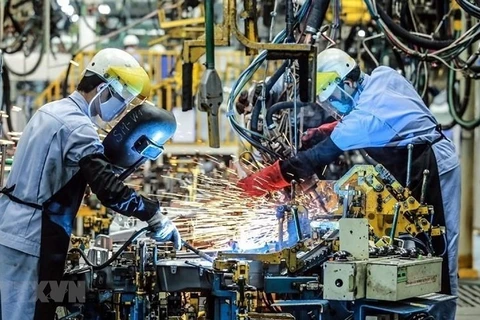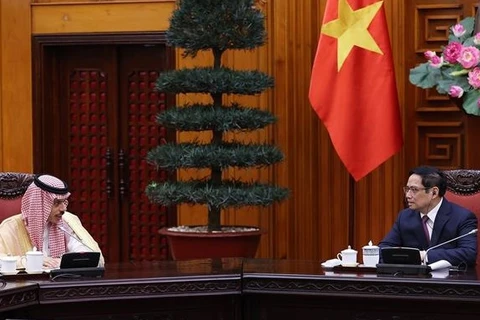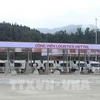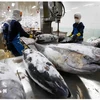Hanoi (VNA) - In the one-page preview of his forthcoming book, the Time Travelling Economist, Charlie Robertson explains why Vietnam ticks every box required to escape poverty, reach middle income status and converge towards developed market wealth levels.
Why is Vietnam so favoured by global investors, that it accounts for 25 percent of all the global money invested in Frontier equities, when Vietnam is just one (5 percent) out of 22 countries in the MSCI Frontier index?
Firstly, Vietnam truly values education. The vast majority of people do in every country, but Vietnam had already achieved over 80 percent adult literacy in the 1980s, ahead of China in the 1990s and India in the 2010s.
Any country needs 70-80 percent to industrialise and Vietnam is decades ahead of not just mainstream emerging markets, but also Frontier markets like Nigeria or Pakistan where the number is still around 60 percent.
Moreover, the country’s leadership – perhaps inspired by communist roots that that have always prioritised education – have encouraged a strong focus on education at secondary school and university level too.
Nearly a decade ago, Vietnam already had 125,000 students at universities abroad, with the 8th largest national representation of any country at US universities. The vast majority bring home these hard-earned skills.
Industrialisation does not just require a population that can read and write. It’s vital that factories have power too. Here again Vietnam is way ahead of so many peers.
The latest data for 2018 shows per capita electricity consumption was above Mexico or Egypt, and more than double that of India or Indonesia. It is estimated that countries need 300-500 kwh per capita of electricity to industrialise. Vietnam had soared past that level in 2005, nearly a generation ago.
According to Robertson, the third key element in economic success is reaping the benefits of the demographic dividend. When a country’s fertility rate drops below three children per woman, parents stop spending all their money on feeding their children and start saving money to invest in their children. Bank deposits begin to boom, and with that comes a bank lending boom.
So, while high fertility countries have small banking sectors (around 20 percent of GDP), and a high double-digit cost of borrowing, Vietnam with a fertility rate of 2 children per woman has deposits above 100 percent of GDP and low interest rates.
At the same time, the adult share of the population is high, and the cheap financing to create infrastructure and investment in the private sector, supports job creation.
Vietnam is experiencing the sweet spot of the demographic dividend and will do so for many years to come, even as countries like the Republic of Korea begin to age quite dramatically by 2030.
The country now exports far more per capita than China. In 2021 Vietnam had the world’s third largest trade surplus with the US, ahead of Germany and Japan, and only behind China and Mexico.
Its competitive minimum wage is still half that of China’s but likely to rise in coming years, adding fuel to an improving domestic demand story.
Robertson also forecast that the currency starts to gradually strengthen in coming years, like Germany or Japan’s did in the 20th century or China’s renminbi has done since 2005.
Vietnam is expected to double its economic size by 2030, and in today’s money, be a trillion-dollar economy by 2040, and a 1.7 trillion USD economy by 2050 similar in size to where the world’s top-10 economy RoK is now./.
Why is Vietnam so favoured by global investors, that it accounts for 25 percent of all the global money invested in Frontier equities, when Vietnam is just one (5 percent) out of 22 countries in the MSCI Frontier index?
Firstly, Vietnam truly values education. The vast majority of people do in every country, but Vietnam had already achieved over 80 percent adult literacy in the 1980s, ahead of China in the 1990s and India in the 2010s.
Any country needs 70-80 percent to industrialise and Vietnam is decades ahead of not just mainstream emerging markets, but also Frontier markets like Nigeria or Pakistan where the number is still around 60 percent.
Moreover, the country’s leadership – perhaps inspired by communist roots that that have always prioritised education – have encouraged a strong focus on education at secondary school and university level too.
Nearly a decade ago, Vietnam already had 125,000 students at universities abroad, with the 8th largest national representation of any country at US universities. The vast majority bring home these hard-earned skills.
Industrialisation does not just require a population that can read and write. It’s vital that factories have power too. Here again Vietnam is way ahead of so many peers.
The latest data for 2018 shows per capita electricity consumption was above Mexico or Egypt, and more than double that of India or Indonesia. It is estimated that countries need 300-500 kwh per capita of electricity to industrialise. Vietnam had soared past that level in 2005, nearly a generation ago.
According to Robertson, the third key element in economic success is reaping the benefits of the demographic dividend. When a country’s fertility rate drops below three children per woman, parents stop spending all their money on feeding their children and start saving money to invest in their children. Bank deposits begin to boom, and with that comes a bank lending boom.
So, while high fertility countries have small banking sectors (around 20 percent of GDP), and a high double-digit cost of borrowing, Vietnam with a fertility rate of 2 children per woman has deposits above 100 percent of GDP and low interest rates.
At the same time, the adult share of the population is high, and the cheap financing to create infrastructure and investment in the private sector, supports job creation.
Vietnam is experiencing the sweet spot of the demographic dividend and will do so for many years to come, even as countries like the Republic of Korea begin to age quite dramatically by 2030.
The country now exports far more per capita than China. In 2021 Vietnam had the world’s third largest trade surplus with the US, ahead of Germany and Japan, and only behind China and Mexico.
Its competitive minimum wage is still half that of China’s but likely to rise in coming years, adding fuel to an improving domestic demand story.
Robertson also forecast that the currency starts to gradually strengthen in coming years, like Germany or Japan’s did in the 20th century or China’s renminbi has done since 2005.
Vietnam is expected to double its economic size by 2030, and in today’s money, be a trillion-dollar economy by 2040, and a 1.7 trillion USD economy by 2050 similar in size to where the world’s top-10 economy RoK is now./.
VNA























